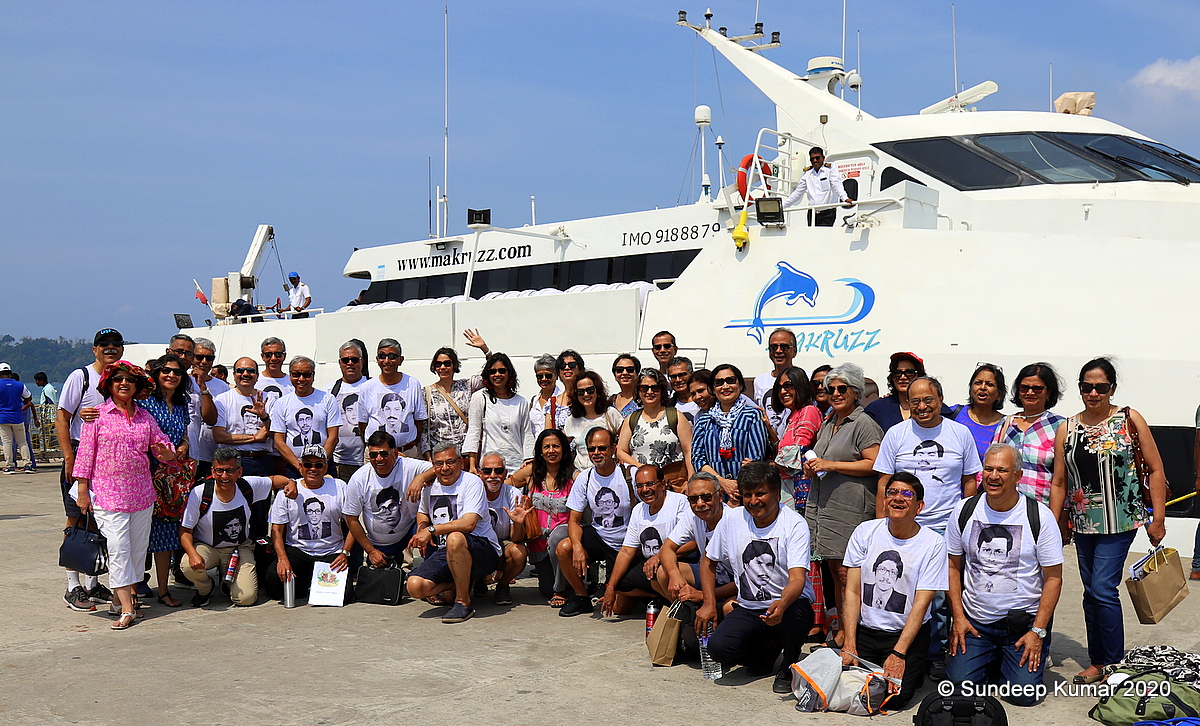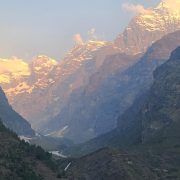Caption: Sundeep Kumar during the PGP 80 reunion at Kashmir.
What is the mantra for a memorable reunion? What is involved in its planning and execution?
How does one maximise participation?
Sundeep Kumar from the PGP 80 batch has been organising the reunions for his batch for the last five years and in that time has put together four events in locations as diverse as Kaziranga, Andamans, Gujarat and Kashmir. Sartaj Sewa Singh (PGP 80) finds out from Sundeep what goes into making a successful reunion happen.
Sartaj: How and why did you decide to start organising our reunions?
Sundeep: It began by chance about ten years ago when I organised my school reunion, which went well and which I enjoyed. I volunteered for [planning] our reunions as it aligns with my passion for travel planning. I should point out that my experience is with our more recent reunions where most of us were around 60 years, so what I say may be more relevant for older age groups.
Sartaj: What is the first step in your planning process?
Sundeep: I started with an online survey among our batch to gather basics like budget, ideal duration, and preferred destinations, giving extra weight to regular attendees’ responses. This helps find a balance in cost and duration. I still use surveys for important decisions like the best time for the reunion.
Sartaj: How does one decide on the destination?
Sundeep: We normally discuss possible locations at the end of each reunion and let a small group make the final decision. The best destination is usually on people’s bucket lists but not yet visited. Locations like Kaziranga, Andamans, and Kashmir fit well. The place should be easily accessible by direct flights, affordable, have necessary infrastructure, enough activities, and be conducive for spending time together. You can’t please everybody, so don’t even try.
Caption: Kaziranga Reunion of PGP 80 batch, 2019
Sartaj: What is the ideal pricing for a reunion?
Sundeep: The goal should be to maximise participation without compromising on quality. The initial survey helped determine what people were willing to pay. You have to judge the price sensitivity, which would vary with age and life stage; younger groups are more price-sensitive, especially if travelling with kids, while older groups generally have higher disposable incomes. I like to set a target price and then cover any cost overruns by other means, like sponsors for elements like liquor, gifts, or evenings. For example, we secured sponsorship from an investment company in exchange for a speaking slot. Or have requested the wealthier batchmates to contribute anonymously to offset some costs. Another good way to reduce participation cost is by offering the flexibility of different stay lengths to accommodate different budgets and schedules.
Sartaj: Is there an art to structuring a reunion?
Sundeep: Yes, this is crucial for a positive experience. A reunion should not be like a jam-packed group tour, nor should it be just a series of social events or be left completely unstructured. A balance and proper sequencing are essential. The first day should be easy, with a quiet welcome cocktail and dinner, allowing people to mingle and catch up at their own pace without formal entertainment. I believe people should come to reunions not just to meet friends but make new ones. So, it’s important to get people to interact, particularly the spouses. It’s a good idea to begin the second day with a team activity that encourages such interaction and is tailored to the venue. For example, we did a ‘Treesure Hunt’ in a forest resort on Andamans, where teams had to locate specific trees based on clues. Each team had people who are not friends or spouses and they bonded with those they might not have got to know otherwise. Schedule the collective activities towards the start of the reunion, followed by more open-ended options towards the latter part. Ensure there is sufficient free time for personal exploration or relaxation and include opportunities for shopping.
Sartaj: You have spoken about providing an experience. Can you give some examples?
Sundeep: One should aim to provide unique experiences that surpass typical tourist activities. For instance, in Kaziranga, apart from safari rides, we did power-gliding. In the Andamans, activities included moonlight kayaking, scuba diving, and snorkelling. For many they were first-time experiences which created lasting memories. Local cuisine is also important, like traditional Assamese meals in Kaziranga, Kashmiri wazwan in Srinagar and fresh trout in Pahalgam. Make the entertainment memorable. Think beyond a DJ and a dance floor in the hotel, like having the dance party on a boat in Dal Lake or a Sufi evening in Gulmarg. These touches made for unforgettable reunions.
Caption: Ruby reunion of PGP 80 batch at IIMA, 2020
Sartaj: How does one ensure flawless execution?
Sundeep: This hinges on thorough planning and anticipating problems. Conducting a reconnaissance (recce) trip is invaluable. It helps verify travel times, identify ideal rest stops, assess first-hand the worth of planned activities etc. During a recce for our Ruby Reunion at IIMA , I discovered that we would need to use the hop-on-hop-off service at Kevadiya which would have been cumbersome and cause delays. By contacting the DC in advance, we not only secured permission to use our own bus but received VIP treatment, ensuring smooth execution.
Sartaj: What kind of detailing is required in planning a reunion?
Sundeep: Pre-planning and detailing are crucial to streamline implementation and minimise surprises. Small things like informing attendees about preferred flights to help coordinate transportation. In Kashmir, we colour-coded the buses with matching ribbons on the luggage to ensure correct loading. Menu planning is also vital. Ensuring a variety of local cuisine and balanced meals and avoiding incongruous combinations like dal makhani with hakka noodles. Keeping dinners light is advisable, especially for our age group. Such detailing ensures smooth operations and enhances the overall experience.
Sartaj: Any advice on gifts and giveaways?
Sundeep: People don’t really appreciate typical souvenirs or memorabilia, like the ones we get at conferences. I have found that practical, location-appropriate gifts work well. For example, in Kaziranga, we gave monogrammed safari jackets, and in the Andamans, we provided folding waterproof backpacks, personalised water bottles, and colourful sun hats. All items were useful during the reunion and could be used afterwards. Ensure gifts are not heavy or bulky, as attendees often travel by air and may have limited luggage space.
Sartaj: What kind of team is required to make a successful reunion happen?
Sundeep: I think a small core team is more efficient than a large one at the planning stage. We’ve found success with a core team of three, understanding and leveraging our respective strengths. During the reunion, different people are assigned specific responsibilities, such as managing alcohol, coordinating activities, or supervising transportation. A travel partner can also be helpful for ground handling and coordination with hotels, especially for multi-location reunions. However, a singular person should oversee the entire event, and preferably a person like me who actually enjoys the process rather than considering it a chore



